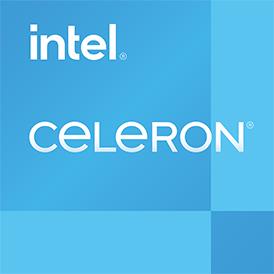 Geekbench 3, 64bit (Multi-Core)
Geekbench 3, 64bit (Multi-Core)
|
|
Intel Celeron G3930
2C 2T @ 2.9 GHz
|
5049
|
|
|
AMD Athlon 5350
4C 4T @ 2.05 GHz
|
3640
|
 Geekbench 3, 64bit (Single-Core)
Geekbench 3, 64bit (Single-Core)
|
|
Intel Celeron G3930
2C 2T @ 2.9 GHz
|
2857
|
|
|
AMD Athlon 5350
4C 4T @ 2.05 GHz
|
1123
|
 Estimated results for PassMark CPU Mark
Estimated results for PassMark CPU Mark
|
|
Intel Celeron G3930
2C 2T @ 2.9 GHz
|
2310
|
|
|
AMD Athlon 5350
4C 4T @ 2.05 GHz
|
1755
|
 Geekbench 5, 64bit (Multi-Core)
Geekbench 5, 64bit (Multi-Core)
|
|
Intel Celeron G3930
2C 2T @ 2.9 GHz
|
1465
|
|
|
AMD Athlon 5350
4C 4T @ 2.05 GHz
|
865
|
 Geekbench 6 (Multi-Core)
Geekbench 6 (Multi-Core)
|
|
Intel Celeron G3930
2C 2T @ 2.9 GHz
|
1136
|
|
|
AMD Athlon 5350
4C 4T @ 2.05 GHz
|
708
|
 Geekbench 6 (Single-Core)
Geekbench 6 (Single-Core)
|
|
Intel Celeron G3930
2C 2T @ 2.9 GHz
|
652
|
|
|
AMD Athlon 5350
4C 4T @ 2.05 GHz
|
236
|
 Cinebench R15 (Multi-Core)
Cinebench R15 (Multi-Core)
|
|
Intel Celeron G3930
2C 2T @ 2.9 GHz
|
220
|
|
|
AMD Athlon 5350
4C 4T @ 2.05 GHz
|
162
|
 iGPU - FP32 Performance (Single-precision GFLOPS)
iGPU - FP32 Performance (Single-precision GFLOPS)
|
|
Intel Celeron G3930
2C 2T @ 2.9 GHz
|
202
|
|
|
AMD Athlon 5350
4C 4T @ 2.05 GHz
|
154
|
 Cinebench R15 (Single-Core)
Cinebench R15 (Single-Core)
|
|
Intel Celeron G3930
2C 2T @ 2.9 GHz
|
123
|
|
|
AMD Athlon 5350
4C 4T @ 2.05 GHz
|
44
|
 Cinebench R11.5, 64bit (Multi-Core)
Cinebench R11.5, 64bit (Multi-Core)
|
|
Intel Celeron G3930
2C 2T @ 2.9 GHz
|
2.7
|
|
|
AMD Athlon 5350
4C 4T @ 2.05 GHz
|
2.0
|
 Cinebench R11.5, 64bit (Single-Core)
Cinebench R11.5, 64bit (Single-Core)
|
|
Intel Celeron G3930
2C 2T @ 2.9 GHz
|
1.4
|
|
|
AMD Athlon 5350
4C 4T @ 2.05 GHz
|
0.5
|

